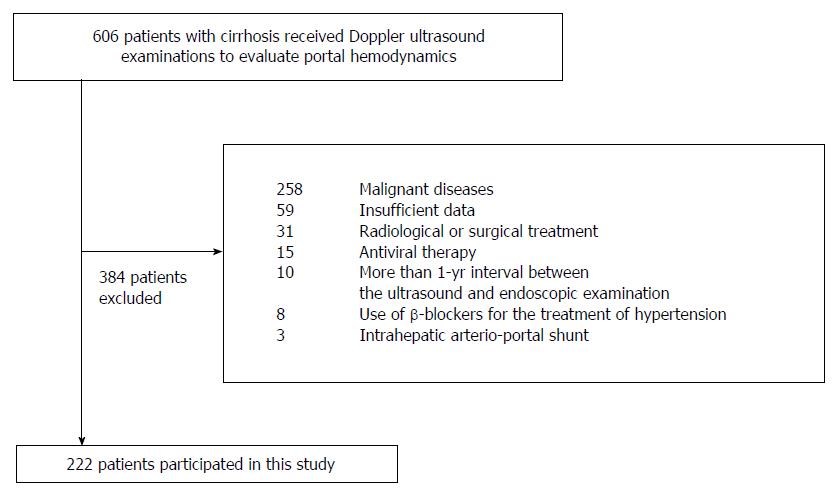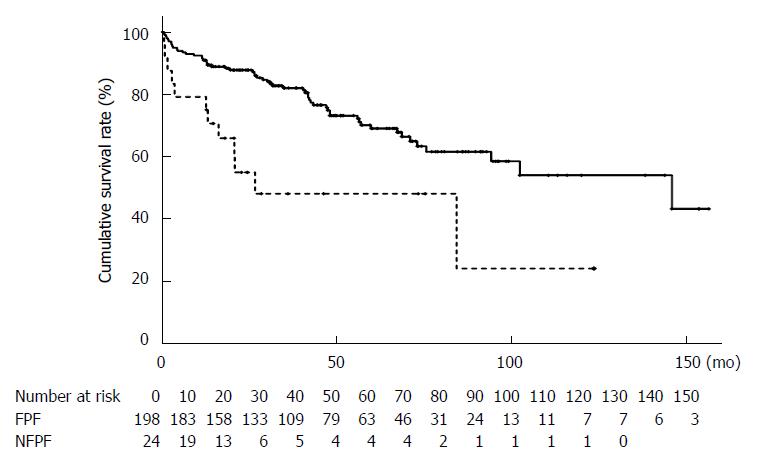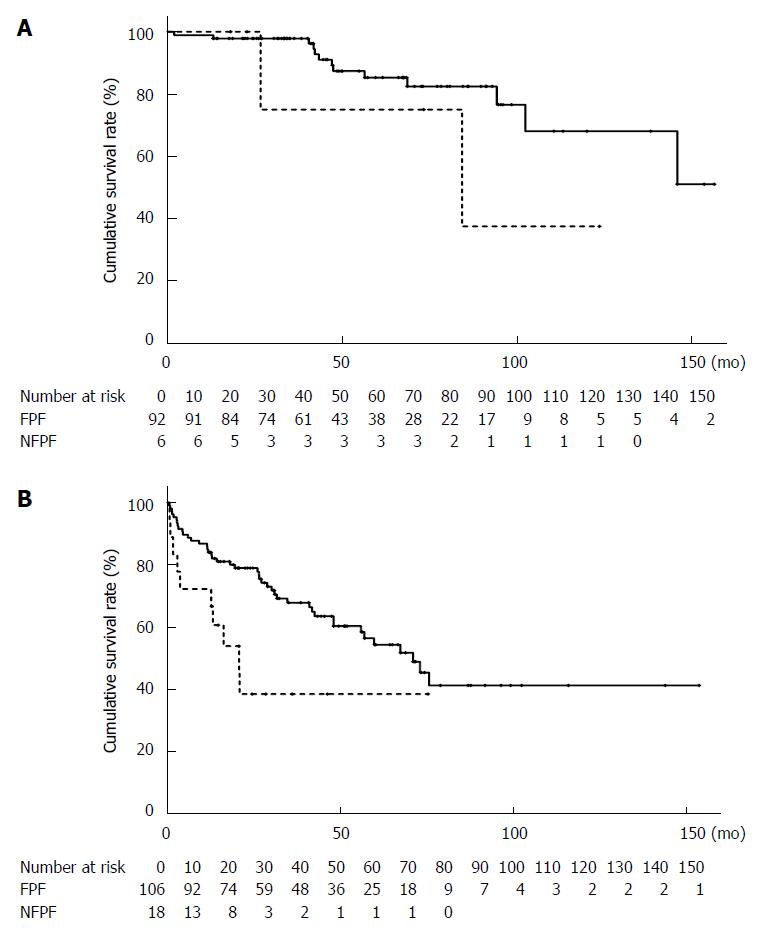Copyright
©The Author(s) 2015.
World J Gastroenterol. Aug 7, 2015; 21(29): 8894-8902
Published online Aug 7, 2015. doi: 10.3748/wjg.v21.i29.8894
Published online Aug 7, 2015. doi: 10.3748/wjg.v21.i29.8894
Figure 1 Patient enrollment.
According to the inclusion and exclusion criteria, 222 participants were qualified eligible to participate in this study.
Figure 2 Cumulative survival rates between the patients with forward portal flow and those with non-forward portal flow.
The cumulative survival rate was significantly worse in the patients with non-forward portal flow (79.2% at 1 yr, 48.0% at 3 yr, and 48.0% at 5 yr) than in those with forward portal flow (90.9% at 1 yr, 82.0% at 3 yrs, and 69.0% at 5 yr, P = 0.0009). Solid line: group with forward portal flow; dashed line: group with non-forward portal flow. FPF: Forward portal flow; NFPF: Non-forward portal flow.
Figure 3 Cumulative survival rates between the patients with forward portal flow and those with non-forward portal flow.
A: There was no difference in the cumulative survival rates between the patients with forward portal flow (98.9% at 1 yr, 98.9% at 3 yr, and 85.3% at 5 yr) and those with non-forward portal flow (100% at 1 yr, 75.0% at 3 yr, and 75.0% at 5 yr, P = 0.2314) using Child-Pugh A classification; B: The cumulative survival rate was significantly lower in the patients with non-forward portal flow (72.2% at 1 yr, 38.5% at 3 yr, and 38.5% at 5 yr) than in those with forward portal flow (84.0% at 1 yr, 67.8% at 3 yr, and 54.3% at 5 yr, P = 0.0123) using Child-Pugh B and C classifications. Solid line: group with forward portal flow; dashed line: group with non-forward portal flow. FPF: Forward portal flow; NFPF: Non-forward portal flow.
- Citation: Kondo T, Maruyama H, Sekimoto T, Shimada T, Takahashi M, Yokosuka O. Reversed portal flow: Clinical influence on the long-term outcomes in cirrhosis. World J Gastroenterol 2015; 21(29): 8894-8902
- URL: https://www.wjgnet.com/1007-9327/full/v21/i29/8894.htm
- DOI: https://dx.doi.org/10.3748/wjg.v21.i29.8894











